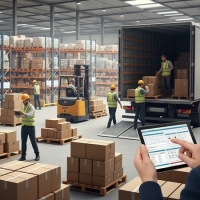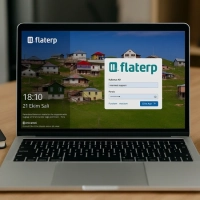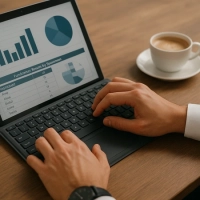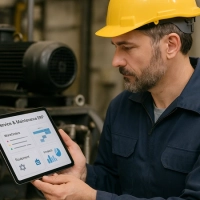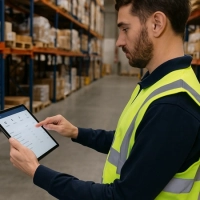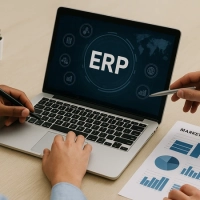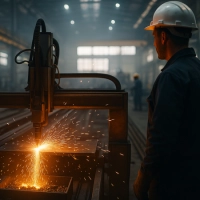
- Smart Raw Material and Inventory Management
- Preventing Waste and Erroneous Work Orders with Production Planning
- Optimizing Purchasing Processes with Supplier Integration
- Increasing Efficiency by Monitoring Energy and Machine Usage Rates
- Instant Decision Making with Real-Time Financial Reporting
- Workforce Planning and Personnel Productivity
- Conclusion: Digital Transformation for Sustainable Profitability
Rising raw material and energy costs, global competition, and rapidly changing customer demands in the manufacturing sector are forcing businesses to reduce costs and increase efficiency. Traditional methods of tracking inventory, managing budgets with Excel spreadsheets, or manually planning work orders are now both time-consuming and prone to errors. Therefore , cloud-based ERP (Enterprise Resource Planning) solutions consolidate all operations, from production to the supply chain, on a single platform, making cost control easier and more reliable. Flaterp ERP helps manufacturing companies reduce costs by up to 20 percent with real-time data flow, automation, and business intelligence tools.
Smart Raw Material and Inventory Management
Raw material and inventory management is one of the largest components of production costs. Excess inventory means unnecessary storage costs and idle capital, while insufficient inventory leads to production disruptions and customer dissatisfaction. Flaterp's inventory and purchasing modules define minimum and maximum inventory levels, trigger automatic orders when critical levels are reached, and track raw material movements in real time. This eliminates excess inventory, stabilizes the supply chain, and significantly reduces unnecessary costs.
Preventing Waste and Erroneous Work Orders with Production Planning
Unplanned work orders, incorrect recipes, or incorrect capacity allocation lead to increased waste rates and delivery delays. Flaterp's production planning module analyzes machine and workforce capacity, recommends the most efficient work order, and predicts potential bottlenecks. Real-time production data reduces waste rates and raw material losses, controls costs, and makes production processes more predictable.
Optimizing Purchasing Processes with Supplier Integration
Supplier selection and price fluctuations in purchasing processes directly impact costs. Flaterp's purchasing and supplier management module scores suppliers based on criteria such as price, quality, and delivery time, helping to select the most cost-effective supplier through automated quote collection and approval processes. This reduces supply chain risks, significantly reduces purchasing costs, and ensures uninterrupted production.
Increasing Efficiency by Monitoring Energy and Machine Usage Rates
Energy consumption and unplanned machine downtime on production lines often increase costs without being noticed. Flaterp ERP, with its IoT integrations, instantly collects machine operation and energy consumption data, reminds users of scheduled maintenance times, and predicts potential failures. Energy consumption reports prevent unnecessary energy consumption on production lines, increase machine efficiency, and reduce maintenance costs.
Instant Decision Making with Real-Time Financial Reporting
Preparing financial reports manually is both time-consuming and increases the risk of errors. Flaterp's finance and accounting module provides real-time income and expense statements, cash flow, and project-based profitability. Variance analysis identifies cost increases before they occur, allowing managers to make rapid, data-driven decisions. This strengthens budget discipline and minimizes financial risks.
Workforce Planning and Personnel Productivity
Overtime, inaccurate shift scheduling, and low productivity in production facilities are among the factors that increase costs. Flaterp's personnel management and payroll modules automate shift scheduling, monitor performance data in real time, and optimize workforce allocation. This reduces overtime costs, maintains employee satisfaction, and increases productivity on the production floor.
Conclusion: Digital Transformation for Sustainable Profitability
The key to reducing costs and achieving a competitive advantage in the manufacturing sector is digitalization. Flaterp ERP centrally manages all processes, from raw materials and inventory to production planning, supply chain management, and financial reporting. Real-time data, automation, and business intelligence help companies not only control their current costs but also achieve sustainable long-term profitability. Transitioning to digital budget management with Flaterp ERP is the most powerful way to take firm steps forward in the manufacturing sector.











